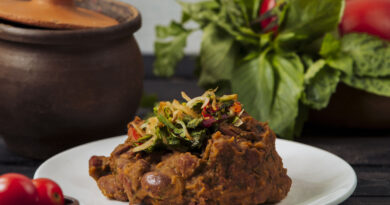Umngqusho
Umngqusho: Exploring the Rich Legacy of South Africa’s Cultural Staple
Introduction:
South Africa’s culinary landscape is as diverse as its people, and at the heart of this rich tapestry lies a dish that not only tantalizes the taste buds but also tells a story of tradition, resilience, and cultural heritage. Umngqusho, a traditional South African dish, has been a staple in households for generations, offering a flavorful journey through the history and culinary practices of the Rainbow Nation. Join us as we delve into the origins, preparation, and cultural significance of Umngqusho, celebrating the artistry behind this beloved dish.
Umngqusho Origins: A Culinary Tapestry Unfolds
Historical Roots:
Umngqusho has deep roots in the heritage of the Xhosa people, one of the largest ethnic groups in South Africa. Traditionally prepared by the Xhosa, the dish has evolved over time, becoming a symbol of cultural identity and pride.
Significance in Xhosa Culture:
In Xhosa culture, Umngqusho is often associated with significant life events and celebrations. It is served during rites of passage, family gatherings, and ceremonies, highlighting its role as a dish that brings people together in moments of joy and unity.
Ingredients and Preparation: Crafting Umngqusho with Love
Main Ingredients:
- Mielie (Maize) and Sugar Beans: The foundation of Umngqusho lies in the combination of maize and sugar beans. This duo creates a harmonious blend of textures and flavors, with maize providing a hearty base and sugar beans adding protein and depth.
- Onions and Garlic: These aromatic ingredients are sautéed to create a flavorful base for Umngqusho, infusing the dish with a savory undertone.
- Vegetables: Depending on personal preferences and regional variations, Umngqusho may include a medley of vegetables such as carrots, potatoes, and tomatoes, enhancing the nutritional profile and adding vibrant colors.
- Spices: Umngqusho is seasoned with a combination of spices, including salt, pepper, and sometimes curry powder, imparting a well-balanced and aromatic flavor profile.
Preparation:
- Soaking and Cooking: The maize and sugar beans are soaked overnight, ensuring a softer texture during cooking. The next day, they are simmered until tender, forming the foundation of Umngqusho.
- Sautéing Aromatics: Onions and garlic are sautéed until golden brown, creating a fragrant base that enhances the overall flavor of the dish.
- Vegetable Addition: Chopped vegetables are added to the pot, contributing both nutrition and visual appeal to Umngqusho.
- Spice Infusion: The dish is seasoned with a careful blend of spices, allowing the flavors to meld together during the cooking process.
- Simmering to Perfection: Umngqusho is left to simmer, allowing all the ingredients to harmonize and create a dish that is both comforting and rich in flavor.
Umngqusho in Cultural Celebrations: A Dish of Unity
Rites of Passage:
Umngqusho plays a central role in various Xhosa rites of passage, including initiation ceremonies and weddings. The presence of Umngqusho during these significant life events symbolizes the importance of communal bonds and the sharing of traditional dishes as a means of celebration.
Family Gatherings:
Whether it’s a Sunday family lunch or a festive holiday meal, Umngqusho is often present on the South African dining table. Its ability to feed a crowd and evoke a sense of togetherness makes it a cherished dish during family gatherings.
Cultural Preservation:
Through the generations, Umngqusho has been a vital element in preserving Xhosa cultural heritage. As families pass down recipes and cooking techniques, Umngqusho becomes a living tradition that connects the past, present, and future.
Contemporary Twist: Umngqusho in the Modern Kitchen
Fusion Cuisine:
In contemporary South African kitchens, chefs and home cooks alike are experimenting with Umngqusho, infusing it with new ingredients and culinary techniques. Fusion variations may include creative additions like herbs, spices, or unconventional grains to give the traditional dish a modern flair.
Health Consciousness:
As awareness of nutrition grows, Umngqusho is celebrated for its wholesome and balanced composition. Its combination of maize and beans provides a good source of fiber, protein, and essential nutrients, aligning with modern dietary preferences.
Culinary Tourism: Umngqusho Beyond Borders
International Recognition:
With the rise of culinary tourism, Umngqusho has gained international recognition as a must-try South African dish. Travelers seeking an authentic taste of the country are drawn to the rich flavors and cultural significance embedded in this traditional staple.
Culinary Experiences:
Restaurants, both in South Africa and abroad, are embracing Umngqusho on their menus, offering diners a chance to experience the authenticity of Xhosa cuisine. This not only introduces the dish to new audiences but also contributes to the global appreciation of South African culinary diversity.
Conclusion: Umngqusho – A Culinary Symphony of Culture and Flavor
Umngqusho stands as a testament to the rich cultural tapestry of South Africa, weaving together history, tradition, and the communal spirit of its people. As a dish that has transcended generations, Umngqusho continues to evolve while staying rooted in its cultural significance.
In each hearty spoonful of Umngqusho, one can taste the legacy of the Xhosa people and the warmth of South African hospitality. From the humble kitchens of traditional households to the global stage of contemporary cuisine, Umngqusho is not just a meal; it is a culinary symphony that resonates with the heart and soul of a nation, inviting all to partake in the celebration of heritage and flavor.



